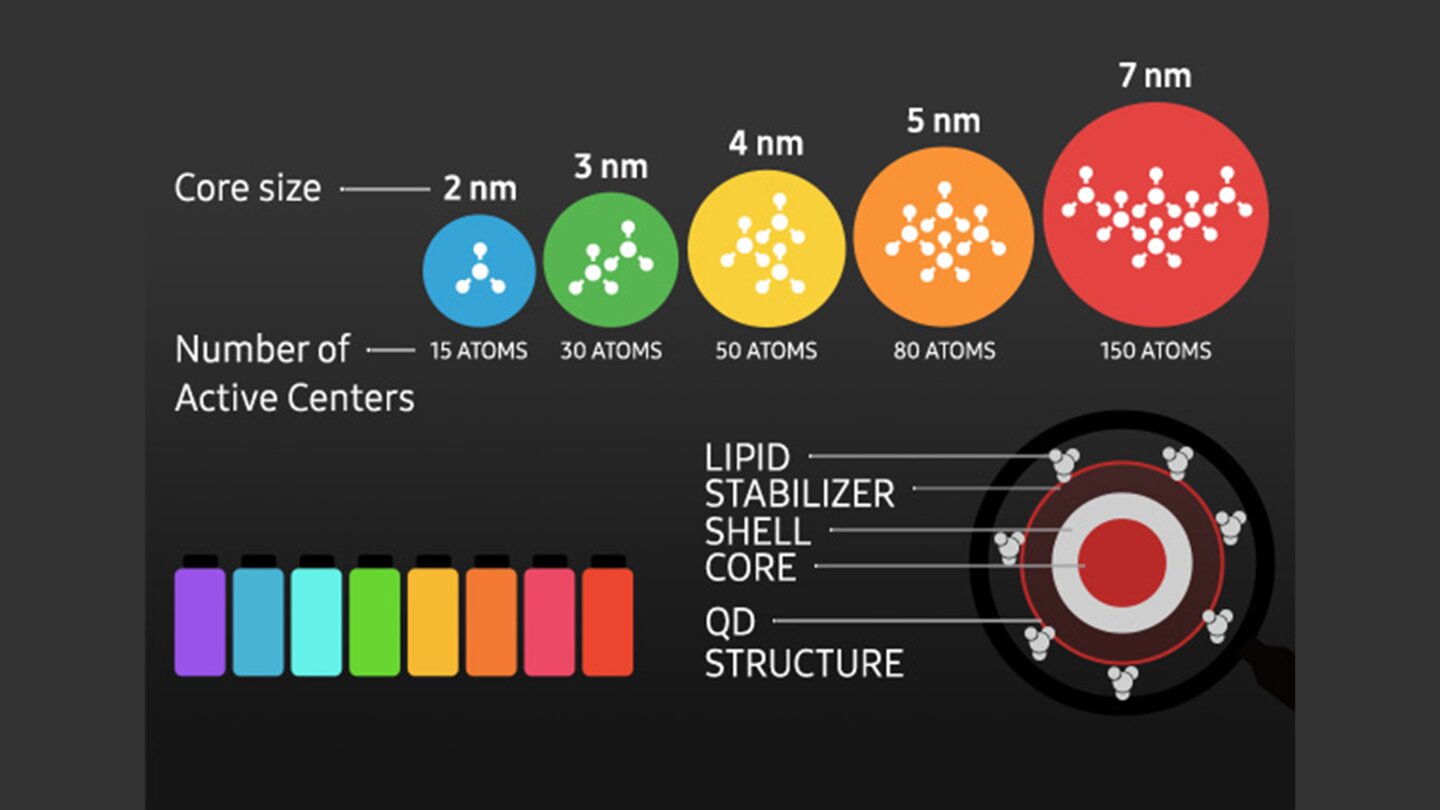Contents

Source: Malvern Panalytical
Understanding Quantum Dots: The Building Blocks of Nanotechnology
Introduction to Quantum Dots
Quantum dots are nanoscale semiconductor structures that confine electrons or other carriers in all three dimensions. These structures can be embedded in another semiconductor material or in glass, and there are also colloidal quantum dots suspended in liquid. The unique feature of quantum dots is their ability to maintain a band gap energy smaller than that of the surrounding medium, which prevents the loss of excitation energy.

The Quantum Effect and Carrier Confinement
The behavior of quantum dots is dictated by quantum effects, which alter the density of states for confined particles compared to larger material pieces. In an ideal isolated quantum dot, there are discrete energy levels, akin to artificial atoms. These energy levels can be modified by adjusting the quantum dot’s dimensions or material composition. However, in practice, large ensembles of quantum dots are used, leading to a distribution of sizes and a broadened density of states.
Fabrication Techniques
Quantum dots are primarily fabricated from semiconductors. Techniques such as molecular beam epitaxy (MBE) or metal–organic chemical vapor deposition (MOCVD) can inadvertently create quantum dots during the formation of thin quantum wells. Under specific conditions, such as the Stranski–Krastanov growth method, quantum dots can self-organize, resulting in consistent sizes and distributions. Typically, these dots are pyramidally shaped, measuring between 5–20 nm, and are considered a part of nanotechnology.
Colloidal Quantum Dots
Another fabrication approach involves solution processing, where precursor compounds are dissolved in an organic solvent at high temperatures. As monomers form and become supersaturated, nanocrystals nucleate and grow, resulting in a colloidal solution. This solution can be used to create layers with a high density of quantum dots, offering a cost-effective method for large-scale production, particularly useful for light-emitting diodes (LEDs).
Applications of Quantum Dots
Quantum dots have a wide range of applications across various fields:
- Creation of vibrant colors in stained glass, such as in church windows.
- Development of laser diodes with low threshold pump power and reduced temperature sensitivity.
- Use in white LEDs, where they emit red and green light to produce a white color tone when excited by blue or near-ultraviolet LEDs.
- Incorporation in semiconductor saturable absorber mirrors (SESAMs) for low saturation fluence absorption.
- Integration into highly sensitive photodetectors and potential use in efficient photovoltaic cells.
- Functionality as single-photon emitters in quantum cryptography.
- Potential application in quantum computations and quantum nanophotonics.
Conclusion
Quantum dots represent a significant advancement in nanotechnology, offering versatile applications from optical devices to quantum computing. As research continues, their role in technology is expected to expand, potentially replacing existing technologies and paving the way for innovative solutions in various industries.

Source: GameStar
Feel free to comment your thoughts.



